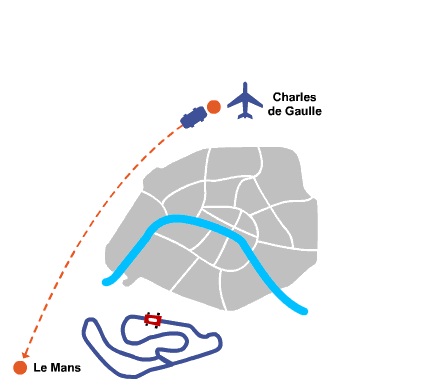Choose your route
Transfer CDG airport - Le Mans

CDG Airport - Le Mans
Private car and van transfer to/from CDG Airport to Le Mans
| Passengers | 1 - 2 | 4 - 5 | 6 - 7 | Action |
|---|---|---|---|---|
| CDG Airport - Le Mans | €440 | €470 | €620 | Book now |
| CDG Airport - Orléans | €290 | €330 | €400 | Book now |
| CDG Airport - Chartres | €220 | €250 | €310 | Book now |
Our private transfer from CDG Airport to Le Mans provides travelers with a direct and relaxing experience. Whether you're arriving for business, racing events, or cultural exploration, enjoy door-to-door comfort in a clean, air-conditioned vehicle. Le Mans is renowned for its famous racetrack and historic Plantagenet Old Town. Visitors can also explore the Saint-Julien Cathedral and the Roman walls that surround the city. Avoid multiple connections or rental delays—your driver meets you right at the airport exit and ensures a stress-free trip. For all pricing options, check our full airport rate guide.
Looking for alternative destinations? Our fleet also covers CDG Airport to Orléans, where history comes alive through the Joan of Arc House and Sainte-Croix Cathedral. If you're visiting Chartres, don’t miss the world-famous cathedral and the Maison Picassiette. Each route is designed to ensure convenience and punctuality. Professional chauffeurs provide timely pick-ups, luggage handling, and route planning. Whether you land early or your flight is delayed, we've got it covered. You can get quick answers to common questions in our practical airport FAQ section before you travel.
Book a Chauffered car service from Roissy Charles de Gaulle airport to Le Mans
- History of Le Mans
- Le Mans nowadays
- What to visit at Le Mans ?
- Discover the Saint Julien Le Mans Cathedral
- Don't miss the 24 Hours of Le Mans Museum !
- Car service at the airport to Le Mans


















